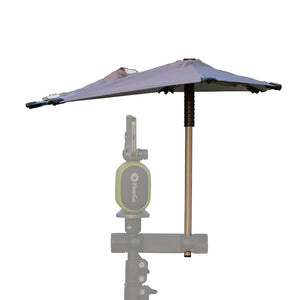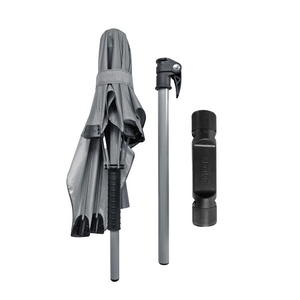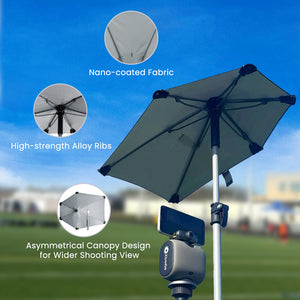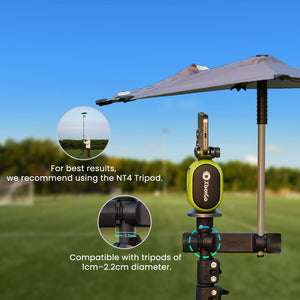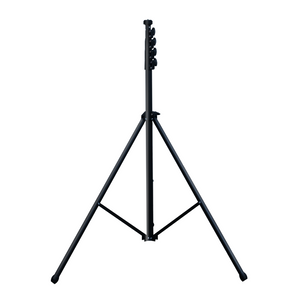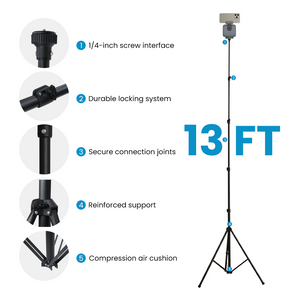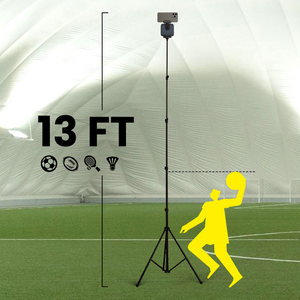XbotGo Chameleon AI Sports Camera
Rugby vs American Football: Why They Create Completely Different Athletes
Picture those wild final plays in football games where teams frantically toss the ball backward, hoping for a miracle touchdown. It's pure chaos.
Now imagine an entire sport where every play looks like that. That's rugby.
Most people compare rugby and American football by focusing on rules and equipment. But the real story? These sports create fundamentally different athletes—and understanding why reveals everything about both games.
The Historical Fork That Changed Athletic Development Forever
Rugby and American football didn't just split—they evolved into opposite athletic philosophies.
Both sports trace back to the same chaotic mob football games played in 19th century England. By the 1870s, American universities like Harvard were playing rugby-style football brought over by British soldiers. For decades, the terms "rugby" and "football" were used interchangeably in the United States.
Then something happened that changed everything.
The Equipment Revolution Nobody Expected
American football introduced protective padding and helmets. Seems logical, right? Protect the players, prevent injuries.
But here's the twist: the equipment didn't just protect players—it fundamentally changed how they could hit. With padding and helmets, players started launching themselves like missiles. The gear dispersed impact forces, so tackles became three times more forceful than in rugby.
Rugby went the opposite direction. Without heavy protection, players had to learn precise tackling technique—wrapping arms, targeting the waist or thighs, avoiding head contact. The lack of padding forced skill development over brute force.
This single decision—to pad or not to pad—accidentally created two completely different athletic worlds.
The 6km vs 1km Reality That Changes Everything
Here's a stat that blows people's minds.
The average rugby player covers about 6-7 kilometers during a match. The average American football player? About 1-2 kilometers.
But wait—there's more to this story.
That rugby player covers those 7km in roughly 80 minutes of game time, with about 22 minutes of actual active movement. Meanwhile, the football player runs their 2km spread across what feels like 3-4 hours, with only about 11 minutes of actual play time in a 60-minute game.
Think about what this means for your body.
Building Marathon Runners vs Sprint Gods
As one player perfectly explained: "A prop [rugby's biggest position] is expected to be able to run a half marathon, while a defensive lineman would die if he had to."
This isn't an exaggeration. I've watched it happen.
American football players can build their muscles to be almost exclusively fast-twitch fibers—designed for explosive, short bursts. A defensive end explodes off the line, engages for 5-8 seconds, then gets a break. Rinse and repeat.
Rugby players need a completely different build. They require a mix of fast and slow-twitch muscle fibers because they're running, tackling, and engaging for 40-minute stretches with minimal breaks. It's sustained intensity versus explosive peaks.
Both approaches create incredible athletes. Just completely different ones.
The Specialist vs All-Rounder Paradox
Here's where things get really interesting.
In American football, a wide receiver might be one of the fastest humans on the planet. He'll likely beat any rugby winger in a straight sprint. But ask that same receiver to make a tackle on a 250-pound forward, then immediately get up and sprint 40 yards, then engage in a physical contest for the ball? He's not trained for that.
Meanwhile, that rugby winger might lose the sprint race, but he can tackle, pass, kick, read defensive patterns in real-time, and sustain high performance for 40 straight minutes.
The Multi-Tool vs Precision Instrument Approach
A rugby coach described it brilliantly: "In rugby, you are supposed to be really good at one thing, but also quite good at everything else."
American football operates differently. You become absolutely elite at your specific role. An offensive tackle's job is to block. That's it. But he'll be better at blocking than any rugby player could ever be.
I saw this firsthand when some All Blacks players tried American football positions. The NFL veteran assessing them noted: "All y'all can throw and catch... that's not the case with football—everybody cannot catch."
That statement reveals the fundamental difference. In rugby, if you can't catch, pass, and tackle, you can't play. Period. In football? If you're a 350-pound nose tackle who can plug gaps, nobody cares if you can catch.
Why Equipment Created Different Sports Entirely
The protective gear difference goes way deeper than safety.
When I watch rugby players, I notice something fascinating: they're constantly aware of their bodies and positioning. Without helmets and pads, they can't afford reckless collisions. This forces technical skill development.
One rugby player who tried on American football gear said: "I struggle to actually see the ball through the [helmet face mask]... you just like playing cricket sometimes you lose the ball."
The Tackling Philosophy Divide
In rugby, tackling technique is everything. You must attempt to wrap your arms around the ball carrier. You aim for the waist or thighs. Head-high tackles result in red cards.
American football? The padding allows—even encourages—different techniques. Players can launch themselves like projectiles. The shoulder pad becomes a weapon. The helmet adds intimidation.
Neither approach is "better." They're optimized for different games. But they create athletes who tackle in completely different ways.
The Training Methodology That Explains It All
Here's something I find fascinating about how these sports train athletes differently.
American football practice is heavily film-based. Teams spend hours studying opponent tendencies, memorizing playbooks, practicing specific scenarios. It's chess with humans. Every play is pre-planned and rehearsed.
Rugby? You can't script continuous play like that.
Real-Time Decision Making Under Fatigue
An expert who played both sports described the difference: "Imagine you're fatigued, you've already made 15 hard tackles in the game and it's the last 20. You kick it but it doesn't reach touch, now you have to get in line and cover. The huge 12 on their team is running straight at you. You're out of breath, bruised, mentally drained and you're about to make another huge hit."
That's rugby. Constant decision-making while exhausted.
In football, you get to catch your breath. Review the play call. Line up fresh. Execute your specific assignment. The mental demands are intense, but they happen during breaks, not while you're sprinting and dodging tacklers.
Both require elite mental toughness. Just different flavors.
The Cardio Training Gap
When American football players train with rugby teams, the results are humbling.
One player shared this story: A group of elite American football players from a top European team joined a rugby practice. After 35 minutes, "1 was puking his ring in the hedge, 2 had developed 'injuries,' 1 had simply said 'F*** this' and gone back to the changing rooms."
The rugby players? They told the football players: "Well that's the warm-up done, you ready for proper training?"
This isn't about one sport being "better." It's about different athletic preparation creating different capabilities.
What This Means for Athletes, Coaches, and Parents
So which sport should you choose? Which creates "better" athletes?
Wrong question.
Matching Your Goals to the Sport
If you want to develop explosive power and become elite at a specific skill, American football offers that path. You could become the absolute best in the world at your position—whether that's reading quarterbacks as a linebacker or running routes as a receiver.
If you want comprehensive athletic development—endurance, agility, decision-making under pressure, and a broader skill set—rugby pushes you toward that goal.
Many athletes benefit from both. Rugby skills transfer surprisingly well to football, especially for running backs and defensive backs who need open-field vision and elusiveness. Football's strength training and explosive power development can elevate rugby players' effectiveness in set pieces.
The Longevity Factor
Here's something worth considering: rugby can be played well into middle age. The continuous nature and technical focus mean older players can compensate with skill and positioning.
American football? It's brutal. Most players can't continue past college, and those who reach the NFL often pay a heavy price physically. The specialized explosive movements, combined with massive collisions, take a toll.
The Bottom Line on Two Athletic Philosophies
After researching hundreds of sources and analyzing athlete experiences, here's the truth:
Rugby creates endurance athletes who can do everything. American football creates specialized weapons optimized for maximum impact.
Neither is superior—they're answering different questions about human athletic potential. Rugby asks: "How versatile can we make an athlete?" Football asks: "How elite can someone become at one specific role?"
Both answers are impressive. The real winners? Athletes and coaches who understand both approaches and draw insights from each to develop better performance.
Whether you're Team Rugby or Team Football, it's time to appreciate that sports can optimize human performance in equally valid but wildly different ways.
XbotGo Chameleon AI Sports Camera
Capture every moment with AI-powered tracking. Perfect for coaches, parents, and athletes who want seamless footage without manual filming.







 Soccer
Soccer Basketball
Basketball Ice Hockey
Ice Hockey Rugby
Rugby










